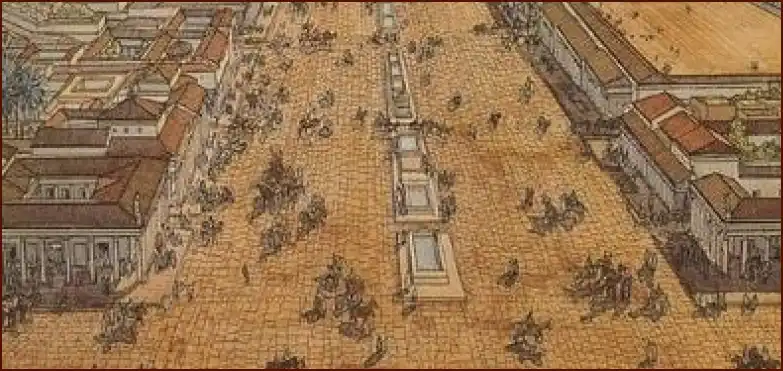While much of the high literature of the Hellenistic period was produced for an educated elite, there was also a vibrant world of popular entertainment that catered to a broader audience.
Table of Contents
The most significant of these forms was the mime, a genre of short, often humorous dramatic sketches that depicted scenes from everyday urban life. Unlike the high art of tragedy or the political satire of Old Comedy, mime was a form of entertainment for the masses, performed in public spaces and at private parties.
To experience Hellenistic mime is to get a glimpse into the daily lives, concerns, and humor of ordinary people in the bustling cities of the Hellenistic world. These sketches were realistic, often crude, and focused on the same kinds of characters and situations that you might find in a modern sitcom or sketch comedy show.
🏙️ A Mirror of Urban Life
Mime thrived in the new, large cities of the Hellenistic era like Alexandria. The plots were simple and focused on recognizable situations and character types from the urban environment. The humor was often cynical and dealt with the struggles of city life.
Common themes and characters in mime included:
- Domestic Squabbles: Arguments between husbands and wives were a staple of the genre.
- Petty Crime: Sketches often featured thieves, con artists, and their hapless victims.
- Food and Drink: The pursuit of a good meal or a strong drink was a frequent motivation for characters.
- Stock Characters: Familiar figures like the greedy pimp, the boastful cook, or the grumpy old man populated the world of mime.
These performances, which included both male and female actors, provided a realistic and often unflattering mirror of contemporary life.
🎭 Herodas and the Literary Mime
While most mime performances were likely improvised and have not survived, we have a precious collection of literary mimes, or *Mimiamboi*, written by the 3rd-century BC poet Herodas. These poems are not scripts for performance but highly polished literary creations that capture the spirit and language of the popular mime tradition. They are written in a difficult, archaic dialect and meter, suggesting they were intended for a sophisticated reading audience that could appreciate the artistry of transforming a low-brow genre into high literature.
Herodas’s mimes give us a vivid window into his world. In one, a concerned mother drags her truant son to his schoolteacher for a beating. In another, two neighborhood women gossip about a friend’s new dildo. Perhaps the most famous, *Mime 4*, depicts two women visiting a temple of Asclepius, where they marvel at the artworks and make dedications. Through these short, dramatic scenes, Herodas brings the voices and concerns of ordinary people to life with humor, realism, and incredible artistic skill.
More Topics
- How Philosophy Influenced Hellenistic Writing
- How to Understand the Hellenistic Book Roll
- How to Read Hellenistic Didactic Poetry
- How Literary Rivalry Shaped Hellenistic Poetry
- How to Appreciate Hellenistic Women Poets
- How Scholarship Became Literature in the Hellenistic Era
- How Royal Patronage Shaped Hellenistic Literature

